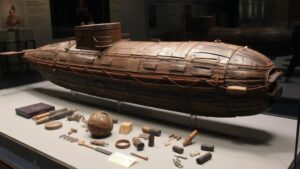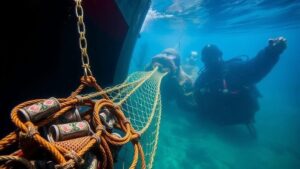Detecting in Shallow Water: Tips for Waterproof Detectors and Accessories
Detecting in Shallow Water: Tips for Waterproof Detectors and Accessories
Shallow water metal detecting offers a unique opportunity for hobbyists and professionals alike to uncover hidden treasures and artifacts submerged beneath the surface. Whether you are searching in lakes, rivers, or along coastal beaches, utilizing waterproof detectors and accessories is essential for effective exploration. This article provides comprehensive insights into the implementation of metal detectors specifically designed for shallow water use and discusses vital accessories that enhance the overall experience.
Understanding Waterproof Metal Detectors
Choosing the right metal detector for shallow water environments is crucial. Waterproof detectors can be categorized based on their design features, intended use, and performance characteristics. Many models are rated with specific waterproof classifications defined by the Ingress Protection (IP) standard. For example:
- IP68: Provides complete protection against dust and can withstand immersion in water beyond 1.5 meters for prolonged periods.
- IP67: Offers protection from dust and can be submerged in water up to 1 meter for up to 30 minutes.
For effective detection in shallow water, it is advisable to choose a detector with at least an IP66 or IP68 rating. Popular models for this purpose include the Garrett AT Pro, Equinox 800 by Minelab, and the Fisher 22. These units feature substantial depth capabilities, enabling them to detect coins and relics at varying underwater depths.
Key Features to Look For
When selecting a waterproof metal detector, certain features enhance performance and usability in shallow water:
- Frequency Range: The frequency influences sensitivity to different types of metals. High frequencies (18 kHz and above) are ideal for small targets like gold nuggets, while lower frequencies (below 5 kHz) provide better performance for locating large objects.
- Target Identification: Detectors equipped with visual displays can provide insight into the type of metal present, helping users make informed digging choices and conserve energy.
- Ground Balance Settings: Automatic or manual ground balancing helps to mitigate the effects of mineralization and allows for smoother operation in varying water conditions.
Accessories for Enhanced Detection
Also to having an effective waterproof detector, investing in appropriate accessories can greatly enhance the success of shallow water detection efforts. Some essential accessories include:
- Shovels and Trowels: A lightweight or foldable trowel is indispensable for digging and retrieving targets from sandy or muddy bottoms.
- Snorkels and Masks: Integrating snorkeling gear allows for easier underwater exploration and target retrieval, especially in deeper sections of shallow water.
- Floatation Devices: Utilizing floatation devices can help maintain stability and buoyancy while detecting in deeper water.
Case studies in metal detecting frequently highlight how proper accessories improve efficiency. For example, users who employ a dedicated digging shovel and underwater gear report a higher success rate in recovering targets, thus optimizing their time spent in the field.
Best Practices for Detecting in Shallow Water
Useing best practices while metal detecting in shallow water environments is vital for maximizing findings while ensuring safety:
- Practice Spatial Awareness: Always be aware of your surroundings, particularly in active water areas, to avoid disturbing wildlife or infringing on public spaces.
- Follow Local Regulations: Research local laws and regulations concerning metal detecting in specific areas, as some locations have restrictions, especially in protected environments.
- Test Equipment Before Use: Conduct preliminary tests of your equipment in shallow water before starting your search. This will help ensure functionality and prevent damage from unexpected encounters with deeper water.
Real-World Applications and Safety Considerations
Shallow water metal detecting has practical applications beyond leisure activity. Many professional treasure hunters utilize underwater detection techniques to locate lost items, historical artifacts, or valuable materials. For example, the recovery efforts for submerged shipwrecks often involve teams equipped with advanced underwater detectors, aiding archaeologists in uncovering significant cultural heritage.
Safety is paramount during shallow water detecting. Always wear appropriate gear, such as wetsuits or life jackets, especially when venturing into unfamiliar waters.
Conclusion: Key Takeaways
Detecting in shallow water can yield rich rewards, but success hinges on the right equipment, accessories, and



